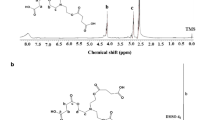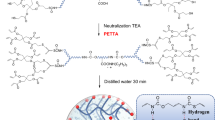Abstract
The field of surface coatings is an area of urethane technology and is rapidly gaining popularity due to ongoing performance improvements. Key to this is improved control of the catalysis of the urethane reaction obtained through an increased understanding of the catalysis mechanisms involved. Organotin dicarboxylates are industrially important catalysts in the formation of urethanes by reacting an isocyanate with an alcohol. This catalyst works for both aliphatic and aromatic isocyanates; however in industrial applications the catalyst is less important for aromatic isocyanates than aliphatic isocyanates. It has already been shown from our earlier investigations of catalysis mechanisms that organotin dicarboxylate catalysis of aromatic isocyanates is different to the mechanism for aliphatic isocyanates for urethane formation in non-polar media. In the present study, we further confirm these results using thermochemical data, which show that for organotin dicarboxylate catalysis of isocyanates in non-polar media, the carboxylate ligand of the catalyst contributes to catalysis of aliphatic isocyanates whereas the ligand has no effect for catalysis of aromatic isocyanates. The new knowledge was used to explain the behavior of pre-polymer when synthesized using different organotin compounds as catalyst with respect to viscosity increase in storage. These data will be useful in the manufacture of pre-polymers for 1 component (1 K) moisture cure urethane systems.















Similar content being viewed by others
References
Szycher M (1999) Szycher’s handbook of polyurethanes, 1st edn. Taylor & Francis, Boca Raton
Wicks ZW, Jones FN, Pappas SP, Wicks DA (2007) Organic coatings: science and technology. Wiley, Hoboken
Gielen M, Davies AG, Pannell K, Tiekink E (2008) Tin chemistry: fundamentals, frontiers, and applications. Wiley, Hoboken
Bloodworth AJ, Davies AG (1965) 975. Organometallic reactions. Part I. The addition of tin alkoxides to isocyanates. J Chem Soc 0: 5238-5244
Houghton RP, Mulvaney AW (1996) Mechanism of tin(IV)-catalysed urethane formation. J Organomet Chem 518(1–2):21–27
Houghton RP, Mulvaney AW (1996) The role of μ-hydroxy and μ-alkoxy binuclear complexes in tin(IV)-catalysed urethane formation. J Organomet Chem 517(1–2):107–113
Bacaloglu R, Cotarcâ L, Marcu N, Tölgyi S (1988) Kinetics and mechanism of isocyanate reactions. III. Reactions of Aryl Isocyanates with Alcohols in the presence of organotin compounds. J Prakt Chem 330(4):541–548
Van Der Weij FW (1981) Kinetics and mechanism of urethane formation catalyzed by organotin compounds. I. The reaction of phenyl isocyanate with methanol in dibutyl ether under the action of dibutyltin diacetate. J Polym Sci Polym Chem Edition 19(2):381–388
van der Weij FW (1981) Kinetics and mechanism of urethane formation catalyzed by organotin compounds-2 The reaction of phenyl isocyanate with methanolin DMF and ctclohexane under the action of dibutyltin diacetate. J Polym Sci A Polym Chem 19(12):3063–3068
Draye AC, Tondeur JJ (1999) Kinetic study of organotin-catalyzed alcohol-isocyanate reactions: part 1: Inhibition by carboxylic acids in toluene. J Mol Catal A Chem 138(2–3):135–144
Draye AC, Tondeur JJ (1999) Kinetic study of organotin catalyzed alcohol-isocyanate reactions Part 2: inhibition by foreign substances in acetonitrile and toluene. J Mol Catal A Chem 140(1):31–40
Devendra R, Edmonds NR, Söhnel T (2013) Computational and experimental investigations of the urethane formation mechanism in the presence of organotin(IV) carboxylate catalysts. J Mol Catal A Chem 366:126–139
Patai S (1977) The chemistry of cyanates and their thio derivatives. vol pt. 1. J. Wiley, New York
Raspoet G, Nguyen MT, McGarraghy M, Hegarty AF (1998) The alcoholysis reaction of isocyanates giving urethanes: evidence for a multimolecular mechanism. J Org Chem 63(20):6878–6885
Samuilov AY, Zenitova LA, Samuilov YD, Konovalov AI (2008) Quantum-chemical study on the reaction of phenyl isocyanate with linear methanol associates. Addition at the C=N bond. Russ J Org Chem 44(9):1316–1322
Samuilov AY, Zenitova LA, Samuilov YD, Konovalov AI (2009) Quantum-chemical study on the reaction of phenyl isocyanate with linear methanol associates: II. Addition at the C=O bond. Russ J Org Chem 45(1):68–73
Samuilov AY, Balabanova FB, Kamalov TA, Samuilov YD, Konovalov AI (2010) Quantum-chemical study on reactions of isocyanates with linear methanol associates: III. * Reaction of methyl isocyanate with linear methanol associates. Russ J Org Chem 46(10):1452–1460
Hatanaka M (2009) Reaction paths toward isocyanate adducts. Bull Chem Soc Jpn 82(9):1149–1151
Çoban M, Konuklar FAS (2011) A computational study on the mechanism and the kinetics of urethane formation. Comput Theor Chem 963(1):168–175
Malwitz N (1995) Reaction kinetic modeling from PM3 transition state calculations. J Phys Chem 99(15):5291–5298
Cysewski P, Król P, Shyichuk A (2007) First principle simulations of ethylene glycol addition to diisocyanates. Macromol Theory Simul 16(5):541–547
Reegen SL, Frisch KC, Institute UoDP (1974) Advances in Urethane Science and Technology, vol v. 3. Technomic Publishing Company, Lancaster
Devi PPK, Maznee TITN, Hoong SS, Zailan AB, Yeong SK, Hazimah AH, Schiffman CM, Sendijarevic A, Sendijarevic V, Sendijarevic I (2016) Urethane-forming reaction kinetics of natural oil polyols versus petroleum-based polyether polyol. Reac Kinet Mech Cat 119(1):93–106
Malwitz N (1992) CAChe connection, 1st edn. CAChe Scientific, Beaverton
Hatanaka M (2011) DFT analysis of catalytic urethanation. Bull Chem Soc Jpn 84(9):933–935
Devendra R, Edmonds NR, Söhnel T (2014) Interaction between trialkyltin alkoxide and phenyl isocyanate in the formation of tin carbamate: a computational and experimental study. J Mol Catal A Chem 395:72–86
Sameera WMC, Maeda S, Morokuma K (2016) Computational catalysis using the artificial force induced reaction method. Acc Chem Res 49(4):763–773
Whittleton SR, Boyd RJ, Grindley TB (2006) Evaluation of effective core potentials and basis sets for the prediction of the geometries of alkyltin halides. J Phys Chem A 110(17):5893–5896
Grimme S (2011) Density functional theory with London dispersion corrections. Wiley Interdiscip Rev Comput Mol Sci 1(2):211–228
Devendra R, Edmonds NR, Söhnel T (2015) Organotin carboxylate catalyst in urethane formation in a polar solvent: an experimental and computational study. RSC Adv 5(60):48935–48945
Frisch MJ, Trucks GW, Schlegel HB, Scuseria GE, Robb MA, Cheeseman JR, Scalmani G, Barone V, Mennucci B, Petersson GA, Nakatsuji H, Caricato M, Li X, Hratchian HP, Izmaylov AF, Bloino J, Zheng G, Sonnenberg JL, Hada M, Ehara M, Toyota K, Fukuda R, Hasegawa J, Ishida M, Nakajima T, Honda Y, Kitao O, Nakai H, Vreven T, Montgomery JA Jr, Peralta JE, Ogliaro F, Bearpark M, Heyd JJ, Brothers E, Kudin KN, Staroverov VN, Kobayashi R, Normand J, Raghavachari K, Rendell A, Burant JC, Iyengar SS, Tomasi J, Cossi M, Rega N, Millam JM, Klene M, Knox JE, Cross JB, Bakken V, Adamo C, Jaramillo J, Gomperts R, Stratmann RE, Yazyev O, Austin AJ, Cammi R, Pomelli C, Ochterski JW, Martin RL, Morokuma K, Zakrzewski VG, Voth GA, Salvador P, Dannenberg JJ, Dapprich S, Daniels AD, Farkas Ö, Foresman JB, Ortiz JV, Cioslowski J, Fox DJ (2013) Gaussian 09. Gaussian Inc., Wallingford
Shao Y, Molnar LF, Jung Y, Kussmann J, Ochsenfeld C, Brown ST, Gilbert ATB, Slipchenko LV, Levchenko SV, O’Neill DP, DiStasio RA Jr, Lochan RC, Wang T, Beran GJO, Besley NA, Herbert JM, Lin CY, Van Voorhis T, Chien SH, Sodt A, Steele RP, Rassolov VA, Maslen PE, Korambath PP, Adamson RD, Austin B, Baker J, Byrd EFC, Dachsel H, Doerksen RJ, Dreuw A, Dunietz BD, Dutoi AD, Furlani TR, Gwaltney SR, Heyden A, Hirata S, Hsu C-P, Kedziora G, Khalliulin RZ, Klunzinger P, Lee AM, Lee MS, Liang WZ, Lotan I, Nair N, Peters B, Proynov EI, Pieniazek PA, Rhee YM, Ritchie J, Rosta E, Sherrill CD (2010) Spartan‘10. Wavefunction Inc., Irvine
Macosko CW (1994) Rheology: principles, measurements, and applications. VCH, New York
Lin K, Zhou X, Luo Y, Liu S (2010) The Microscopic Structure of Liquid Methanol from Raman Spectroscopy. J Phys Chem B 114(10):3567–3573
Shi YJ, Consta S, Das AK, Mallik B, Lacey D, Lipson RH (2002) A 118 nm vacuum ultraviolet laser/time-of-flight mass spectroscopic study of methanol and ethanol clusters in the vapor phase. J Chem Phys 116(16):6990–6999
Yang S, Brereton SM, Ellis AM (2006) Electron impact ionization mass spectrometry of aliphatic alcohol clusters in helium nanodroplets. Int J Mass Spectrom 253(1):79–86
Yamaguchi T, Hidaka K, Soper AK (1999) The structure of liquid methanol revisited: a neutron diffraction experiment at −80°C and +25°C. Mol Phys 96(8):1159–1168
Samuilov AY, Balabanova FB, Samuilov YD, Konovalov AI (2015) Alcohol associates as catalysts of tautomeric transformations. Russ J Gen Chem 85(8):1808–1815
Lu L, Hu H, Hou H, Wang B (2013) An improved B3LYP method in the calculation of organic thermochemistry and reactivity. Comput Theor Chem 1015:64–7
Adams MR, Bushnell EAC, Bruce Grindley T, Boyd RJ (2014) Organotin bond dissociation energies: an interesting challenge for contemporary computational methods. Comput Theor Chem 1050:7–14
Zhao Y, Truhlar DG (2008) The M06 suite of density functionals for main group thermochemistry, thermochemical kinetics, noncovalent interactions, excited states, and transition elements: two new functionals and systematic testing of four M06-class functionals and 12 other functionals. Theoret Chem Acc 120(1–3):215–241
Acknowledgements
The authors thank Uroxsys Ltd. for financial support and the publication referees for their valuable advice. They also thank the New Zealand eScience Infrastruture (NeSI) for providing high performance computing facility to carry out the computational work, the University of Auckland for providing access to the HPC facilities and the technical support teams at Gaussian and Wavefunction for their valuable help.
Author information
Authors and Affiliations
Corresponding author
Rights and permissions
About this article
Cite this article
Devendra, R., Edmonds, N.R. & Söhnel, T. Insight into the mechanism of the catalysis of urethane formation by organotin(IV) dicarboxylate. Reac Kinet Mech Cat 124, 487–502 (2018). https://doi.org/10.1007/s11144-018-1366-4
Received:
Accepted:
Published:
Issue Date:
DOI: https://doi.org/10.1007/s11144-018-1366-4




